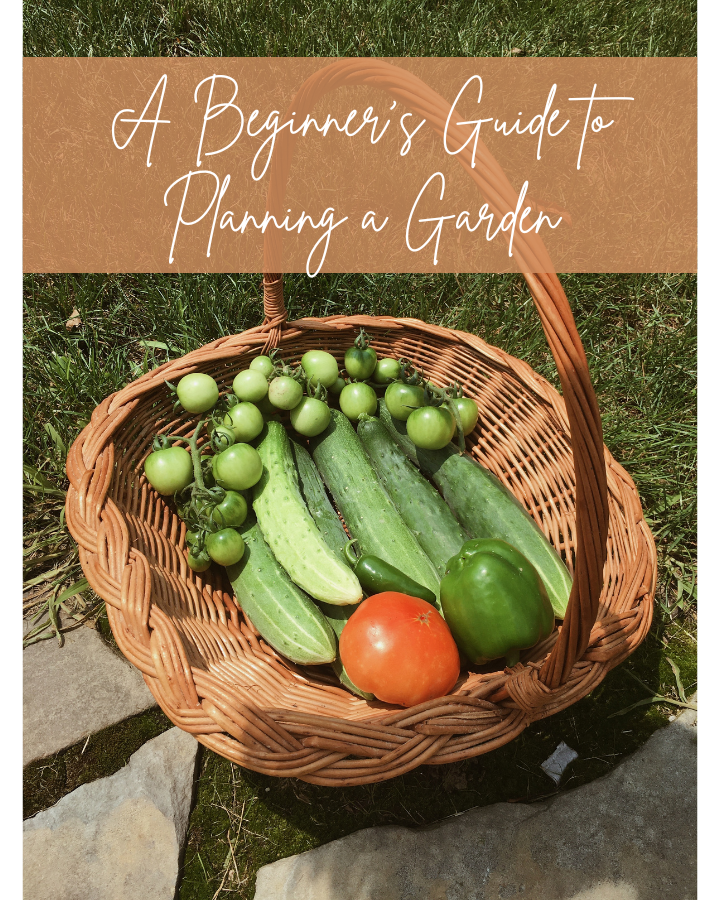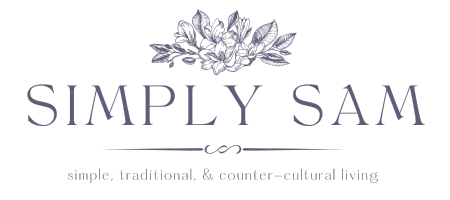
As I’m writing this, it’s about 30 degrees and there is still a foot of snow on the ground. However, right now is the perfect time to start planning your spring garden, especially if you’re in a northern state like I am. This will be my second year growing a garden. I know how overwhelming starting a garden for the first time can be, so I wanted to share the process I go through while planning out my garden so that it will hopefully seem less scary.
I want to start out by saying that gardening doesn’t have to be hard. So many people stress too much about making it perfect, but it really doesn’t have to be that way. Last year, my first year as a gardener, I had no idea what I was doing. I got a late start to it, so I ended up just running to Target and getting a few packs of seeds, some red solo cups, and some seed starting mix to start some seeds in my dorm room window. I also had a huge delay in actually getting my plants into the ground. All that to say, so many things went wrong in my garden-planning that made it seem like my garden would be a complete failure. All the things I read made me think that everything had to go perfectly in order for my garden to be super successful, but I proved myself wrong. I ended up with so many cucumbers, tomatoes, and peppers that I didn’t know what to do with half of them. Not to mention, they were some of the best veggies I’ve ever had. You don’t have to do everything perfectly or by the book for your garden to be successful. Gardening should be fun, it doesn’t need to be stressful.
However, there are some things that are important when it comes to planning out your garden that will help to make your gardening go more smoothly and help you to be more organized and prepared.
+ Make a List of Fruits & Veggies Your Family Eats A Lot Of
I know how it is. You’re going to want to start growing every single vegetable known to man. As tempting as this is, you shouldn’t do it. Especially if this is your first year of gardening. Maybe later on once you become a novice gardener you can start incorporating fun crops into your harvest, but right now when you’re first starting out, you should keep it simple. The first year you plant a garden you should stick to the basic vegetables and the ones you will get a lot of use out of. For me, that was peppers, tomatoes and cucumbers. Instead of having a large amount of vegetables to take care of and learn about, I only had three so that I could focus on them and learn more about the process of gardening itself. Each vegetable has its own growing habits and needs, so if you start out with a large variety, you will be overwhelmed. Think back on your meals and make a list of the vegetables (and eventually fruits) that you eat a lot. Then pick a few of those to grow this year. Maybe next year you’ll add two or three more, but there is no shame in starting small and basic.
+ Plan a Layout for Your Garden
A big part in deciding what vegetables to grow comes down to how much space you have. I have a huge list of things I want to grow now that I have some experience under my belt, but right now while I’m still living with my parents, I have limited space so I can only grow a handful of those things. Look into how much space your desired veggie needs around it within your garden. Some plants can grow closer to each other than other plants so that is something to keep in mind. Also, some plants grow better when they’re next to certain plants than they do with other plants so that’s something to think about too. That’s called companion planting. I can make a whole post on that soon, but a general rule of thumb is that things that cook well together grow well together. For example, tomatoes grow really well with basil and other herbs. Planning a layout for your garden will also save you time and help the transplanting process go a lot smoother when the time comes so that you know exactly where each plant should go.
+ Buy Your Seeds Around the New Year
In order to make sure you get your seeds in time and before they are out of stock, I would suggest starting to think about ordering seeds around the new year, maybe even right after Christmas. Even though I grew seeds that I bought at Target, I do think buying good quality seeds from a good company is important to produce the best harvest possible. This year I ordered my seeds from Baker Creek in hopes that I can save seeds from my garden for the future since they are heirloom seeds. This just means that they aren’t hybrids, so the seeds produced by the plant will be the same as the ones I planted, so I can save them and plant in my garden in the future. Some other good companies are Burpee, Park Seed, Renee’s Garden, Botanical Interests, and Gurneys.
+ Determine When to Start Seeds and Transplant Plants
Each plant has a specific amount of time that it needs to grow before it is transplanted into your garden. For the most part, you’ll be fine if you start your seeds about a month before the last frost date. There are nine hardiness zones in the country. These zones are based on average first and last frost dates and average temperatures, so when determining when to start your garden seeds indoors make sure you first determine what zone you are in. Each packet of seeds you buy will have a timeline for when they should be started indoors and when they should be transplanted outside, so just follow that timeline in relation to your zone’s average frost date. You can get even more specific and enter your zip code on the Farmer’s Almanac website and they will tell you when your last frost date is expected to be this spring.
+ Buy Plants a Couple Weeks Before Your Last Frost Date
There is no shame in just buying vegetable plants instead of starting them from seeds yourself, especially if you’re new to gardening and/or don’t have much experience with house plants. There’s also no shame in trying to start seeds and ending up just having to buy the plants because yours didn’t do well. If you end up buying veggie plants for one reason or another, I would suggest buying them at least a few weeks before your last frost date. You don’t want to get them too early, but you also should have them for enough time to harden them off before transplanting them. Hardening the plants off means that you take them outside into the elements for various amounts of time before transplanting them into your garden. This gives them time to adapt to being outside so they have a better chance of surviving and thriving in your garden. If they go straight from being inside or even in a greenhouse to being stuck in the ground outside, they may struggle a little.
I know how daunting gardening can seem for beginner gardeners, so I hope that these tips helped you feel a little more confident and ready if you’ve been wanting to start a garden. Keep your eyes out for some more gardening posts in the near future. Specifically, I want to teach you some garden slang and how to start seeds, and take you through my gardening process and planning this year.
